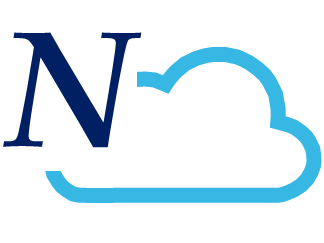
In today’s digital landscape, where data reigns supreme, large enterprises such as data centers, hospitals, and universities face a monumental challenge: managing and monitoring energy consumption efficiently. With the proliferation of Internet of Things (IoT) devices, the need for real-time data acquisition and management has become more critical than ever. This is where hybrid cloud solutions emerge as a game-changer, offering unparalleled flexibility, scalability, and reliability for energy monitoring in these vast and complex environments.
The Challenge of Energy Monitoring in Large Enterprises
Large enterprises, including data centers, hospitals, and universities, operate on a massive scale, consuming substantial amounts of energy to sustain their operations. Monitoring energy usage in such environments is not only essential for cost optimization but also for sustainability efforts and regulatory compliance. However, traditional methods of energy monitoring often fall short in meeting the dynamic demands of these organizations.
Data centers, for instance, are notorious for their high energy consumption due to the continuous operation of servers and cooling systems. Hospitals require precise energy management to support critical medical equipment and ensure uninterrupted patient care. Similarly, universities, with their sprawling campuses and diverse facilities, must monitor energy usage across various departments and buildings efficiently.
Leveraging Hybrid Cloud Solutions for IoT Energy Monitoring
Hybrid cloud solutions offer a potent combination of on-premises infrastructure and cloud-based services, providing large enterprises with the agility and scalability needed to manage their IoT deployments effectively. When it comes to energy monitoring, hybrid cloud architectures present several advantages:
1. Scalability:
Large enterprises deal with vast amounts of data generated by IoT devices deployed across multiple locations. A hybrid cloud infrastructure allows them to scale their data acquisition and management capabilities seamlessly. By leveraging cloud resources, organizations can accommodate fluctuations in data volume without investing in additional on-premises hardware.
2. Real-Time Data Processing:
In energy monitoring, real-time insights are crucial for identifying anomalies, optimizing consumption patterns, and responding promptly to critical events. Hybrid cloud solutions enable enterprises to process streaming data from IoT devices in real time, leveraging the computational power of cloud-based analytics platforms. This ensures that stakeholders have access to up-to-date information for informed decision-making.
3. Redundancy and Reliability:
Ensuring continuous uptime is paramount for critical operations in data centers, hospitals, and universities. Hybrid cloud architectures offer built-in redundancy, with data replicated across multiple locations for enhanced reliability. In the event of hardware failures or network disruptions, enterprises can seamlessly switch between on-premises and cloud resources, minimizing downtime and ensuring uninterrupted energy monitoring.
4. Cost Optimization:
Managing on-premises infrastructure incurs significant capital and operational expenses. Hybrid cloud solutions allow enterprises to optimize costs by leveraging pay-as-you-go cloud services for data storage, processing, and analytics. By dynamically allocating resources based on demand, organizations can avoid over-provisioning and realize cost savings without compromising performance.
Case Studies: Hybrid Cloud Success Stories in Energy Monitoring
1. Data Center Efficiency:
A leading data center provider implemented a hybrid cloud solution to monitor energy usage across its global network of facilities. By deploying IoT sensors and leveraging cloud-based analytics, the company gained real-time visibility into power consumption, cooling efficiency, and equipment performance. This enabled proactive maintenance, optimized resource allocation, and substantial cost savings.
2. Hospital Energy Management:
A large hospital network adopted a hybrid cloud platform to monitor energy usage in its medical facilities. By integrating IoT devices with cloud-based monitoring tools, the organization improved energy efficiency, reduced operational costs, and ensured compliance with regulatory requirements. Real-time alerts and predictive analytics capabilities enabled the hospital staff to respond swiftly to energy-related issues, enhancing patient care and safety.
3. University Campus Sustainability:
A prestigious university implemented a hybrid cloud solution to track energy consumption across its campus buildings, laboratories, and dormitories. By collecting and analyzing data from IoT sensors deployed throughout the campus, the university optimized energy usage, reduced carbon emissions, and engaged students and faculty in sustainability initiatives. The flexibility of the hybrid cloud infrastructure allowed the university to adapt to changing requirements and scale its energy monitoring capabilities as needed.
Conclusion: Unlocking the Potential of Hybrid Cloud for IoT Energy Monitoring
In the era of digital transformation, large enterprises face unprecedented challenges in managing and monitoring energy consumption. By harnessing the power of hybrid cloud solutions, organizations can overcome these challenges and unlock new opportunities for efficiency, sustainability, and innovation. Whether it’s optimizing data center operations, enhancing patient care in hospitals, or promoting campus sustainability in universities, hybrid cloud data acquisition and management offer a scalable, reliable, and cost-effective solution for IoT energy monitoring. As we look towards a future driven by data-driven insights, embracing hybrid cloud architectures will be essential for staying ahead in the evolving landscape of energy management.

Recent Comments